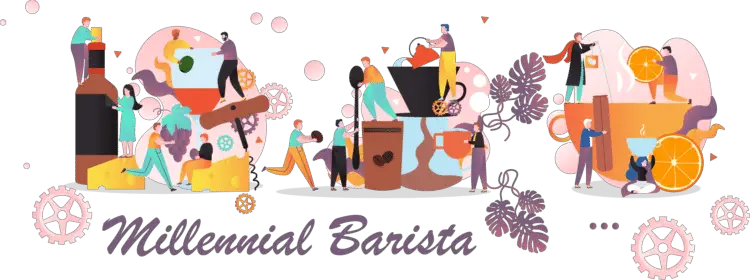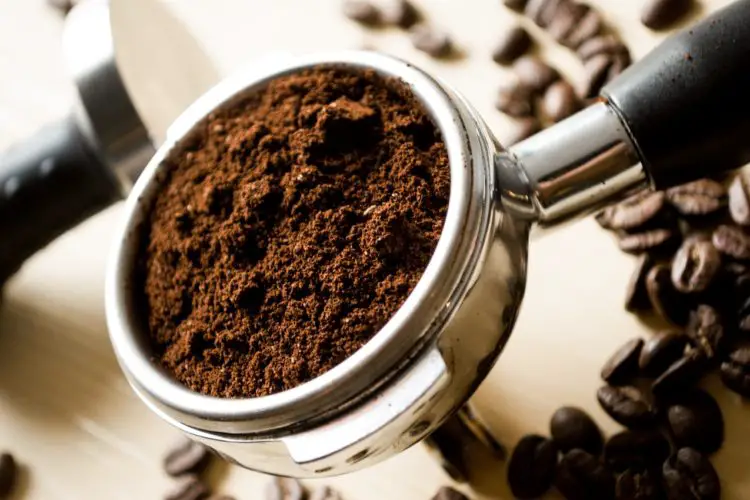Are you disappointed with the way your coffee tastes when you make it at home? If so, you’re in the right place. You might think that you can never get the kind of coffee you pop into the coffee shop for in your own kitchen, but all you need is just to put in a few little steps that will convert your kitchen into your own private café.
Better coffee at home is entirely possible when you use water at the correct temperature, weighing your beans out rather than going by volume, and of course, grinding fresh-roasted beans right then and there just prior to brewing your coffee.
While each of these little things will help, one step you can’t ever skip is grinding your coffee yourself. It is the most essential step in making the best coffee at home. The size of the grind itself can make a major change for the better in the taste of your coffee. Is fine ground coffee stronger though?
In short, yes, it is! The grind size and the consistency is the game-changer you need to get the kind of coffee that puts more pep in your step. It’s the kind of coffee that friends and family will enthuse about when they come over.
Would you like to get that kind of coffee every day in your own home? Of course you would! So keep on reading to find out how grind size makes all the difference and how you can be a coffee brewmaster in your kitchen!
What is a fine ground coffee?
Quite simply, fine grind coffee is when you grind up the beans very well so it has a smooth and powdery texture to it. All you need is good hot water and it will extract the flavor from your fine ground coffee much faster than a coarser grind.
But it’s not just that simple. You see, coffee can come in many grind styles. Some of them are better suited for other brewing methods. Depending on your coffee machine, you may need to go with a fine grind or something more coarse.
What kinds of grinds are there? Here are your options from largest grind to smallest:
- Coarse grind
- Medium coarse grind
- Medium grind
- Medium fine grind
- Fine grind
- Extra fine grind
But what do these all mean and which one is best for you? Keep reading and you’ll soon be ready to become a master of the grind!
Why grind size matters
As mentioned, the different grind sizes come into play with your brewing methods. And with that said, there are three factors that contribute to this. There’s the contact time, the extraction rate, and the flow rate.
Basically, the extraction rate of your coffee grounds increases when there is a larger surface area. So, to increase said surface area, you need to grind the coffee to a finer consistency. The higher the extraction rate is, the less time for contact is needed, and thus, a finer grind will reduce the flow rate of the water, making for an increase in contact time.
If you’re using a brew method that uses a short contact time, then you should always choose a fine grind on those beans you’ve loving stored away in an airtight container. However, if you have an immersion brewer, the coffee grounds steep in the water for several minutes. This means the contact time is higher and it will need a more coarse grind for your best coffee flavor.
What happens when the contact time is too high or that grind is too fine? You’ll wind up with over-extracted coffee that gives you an unpleasant bitter taste. And if the grind is too coarse or your contact time is too short, you wind up with weak coffee.
It’s finding this balance between the two that will result in your best coffee at home. Then there are the different types of filters, the pressure, and the temperature. All of these are things you should consider when trying to get the right grind size. For most brewing methods, it’s around 195 to 205 degrees Fahrenheit with very little or no added pressure.
Is fine ground coffee stronger?
Yes, fine ground coffee is in fact stronger. The grind influences how quickly that precious caffeine, the nectar of the gods, is extracted. When you use a finer grind, you are able to extract that caffeine faster. The water in your coffee machine reaches the surface area of the coffee and then saturates it with relative ease since there is more of it. This is a good thing for a nice, strong brew.
There’s a balance to strike here though, for grinding it too fine will result in over-extraction while not grinding it enough will lead to under-extraction. It may take you a few pots of coffee to experiment with to get your signature grind down pat.
Each of these things will influence how quickly the caffeine is extracted from your coffee. You can extract caffeine from a whole bean by saturating it with water, but that’s just silly. It would take a long time for that extraction to take place.
Let’s take espresso for example. It’s made with pressurized water and more ground coffee than you’d use in a drip method. This results in a much higher concentration of caffeine than a regular drip-cup of coffee. So, it makes sense that if you want a more caffeinated cup of coffee, you need to use more ground coffee.
What kind of grind should you use to get a strong coffee?
Not all grind sizes are right for every method of making coffee though. That grind is what makes all the difference and is the very reason you need a coffee grinder so you can use your top-quality beans to make different styles.
Every coffee lover has these moments of experimentation. What makes it easier to get the right grind for the job every time? A burr grinder. It has specific settings that you can use for the different types of coffee machines and brewing methods. You simply set it to what you’ll be using whether it’s a fine grind for espresso or you’re going to pull out the French press and need a coarse grind. You’ll always have the perfect grind for your coffee brewing needs.
And while we insist you should buy those beans whole for the best flavors and freshness, if you do buy ground coffee because it’s just you and you stick to small batches, then look for the type of grind on the bag. Good coffee will always have it and you’ll be happier because your coffee will absolutely taste better. When buying from a roaster, you can request it be ground for the brewing method you’ll use too.
But really, if you love coffee, even if you live alone and seldom have guests for coffee, buying whole beans is really best. You’ll fall in love with your grinder and relish having those beautiful cups of coffee that will set the tone for your day. And maybe you’ll even start inviting friends and family over more often to share a cup. Or the neighbors. Or someone special. If not, you’ll always have perfect coffee in your cup.
How do you know what type of grind to seek out or create with your grinder for your coffee brewing method of choice though?
Let’s break that down.
– Drip Coffee Maker
First up, the drip coffee maker. Drip coffee makers let the coffee steep longer. Thus, that contact with the water is longer. Your coffee will taste best if you keep the grind coarse. If you’ve been buying coffee already ground from the store, this is where you will have the biggest difference in taste. Instead of buying it ground, get that grinder and buy the best whole roasted coffee beans you can find. Grind up only what you need but use a coarse grind.
Sometimes what you buy already ground is a little less coarse than you need for this brewing method. If you get a burr grinder, you can get that coarse ground that it takes for making amazing coffee in a drip coffee machine.
– French Press
Next, the French press. This method also keeps the water in contact with the coffee for longer. But with a French press, you can get away with a medium grind or go with a coarse grind. In all honesty, the best choice will be more on the coarse side of things. Again, having your own grinder allows you to experiment and play barista in your own home. Try different grinds each day to see what tastes best to your palate. You may find you love it more when you use the most coarse grind, or you might find going with a more medium coarseness works better for you.
– Espresso
Have an espresso machine? The only choice for making espresso is a fine ground. It’s what gives espresso that caffeinated pep and that richly indulgent taste. Anything over fine will result in espresso that tastes unpleasant and why do that to yourself?
Whatever brewing method you’re using, when you get the ground right, it changes everything. For example, if you’ve been using a more fine grind in your drip machine and you start using coarse grinds, you’re going to fall in love with the coffee you make at home again.
But whatever you do, don’t buy bulk beans no matter how good they are. It’s best to buy in small batches. Coffee does go bad, not in the way of poisoning you, but it will surely sully your impression of that roast very quickly. Unless you have a family of 12 coffee drinkers in it, you’re better off skipping that bulk buy and going with a size that allows you to use up your beans while they’re still fresh and potent.
You should look for whole roasted beans that are as close to the day they were roasted as possible. Store them properly in an airtight container in a cabinet or pantry and only grind what you need as you need it. It can take a bit of trial and error getting that part right too, but if you use a kitchen scale, you can get a better handle on how much you need for the amount of coffee you plan to brew.
Until you get things just right with grinding up the right amount, use an airtight container for any leftover grind. This will keep its flavor for around 5 days, 6 days maximum.
With this combination of grinding techniques and high-quality coffee, you will soon have coffee that rivals your favorite coffee shop.
Conclusion
If good coffee is important to you, then you should do everything in your power to make it at home. Why settle for a ho-hum cup of coffee when you can have the kind of coffee that ignites your soul every morning? You won’t have to spend $5 a cup either.
The key is not just in buying quality whole roasted beans, though that is important. It’s about how you grind those beans. Each brewing method has the best style grind that works with it. You need to grind your beans to match that extraction method. The longer the grounds come into contact with water, the more coarse they must be to get that perfect flavor. Conversely, the shorter the contact, the finer the grind.
When you go with that every time, you’ll have the kind of coffee you can delight in every morning, whether you’re enjoying your weekend curled up in your favorite chair or you’ve got your coffee in your to-go-cup as you sit in rush hour on the way to the office.

